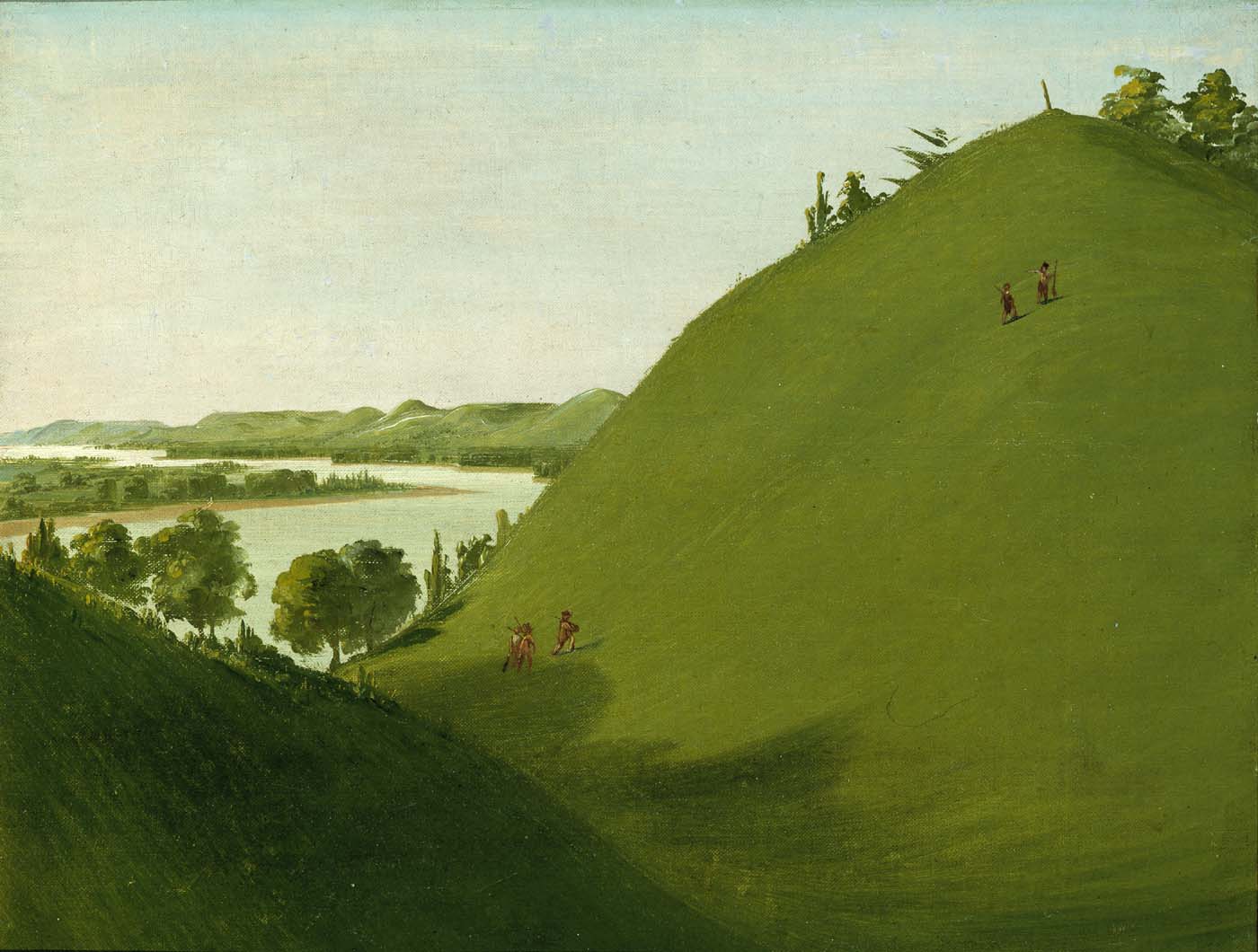Floyd's Grave, Where Lewis and Clark Buried Sergeant Floyd in 1804

George Catlin’s view of a bluff some twelve hundred miles above St. Louis captures the vast scale of a continent that, in the 1830s, was only beginning to be settled by white Americans. The artist swept bright green paint across the foreground to suggest the brilliant glow of spring, and spotted the hillside with tiny figures that lead the eye upward. The thinly painted line at the top of the bluff is the cedar post marking the grave of Sergeant Floyd, a member of the Lewis and Clark expedition.
Catlin visited the site several times by canoe. He would wander up the hill and think about “the solitude and stillness of this tenanted mound . . . the windings infinite of the Missouri, and its thousand hills and domes of green, vanishing into blue in distance . . . ” In that extraordinary place, he felt that he was closest to God. (Truettner, The Natural Man Observed, 1979
- 624
- Other objects by this creator in this institution
- 312
- Objects by this creator in other institutions